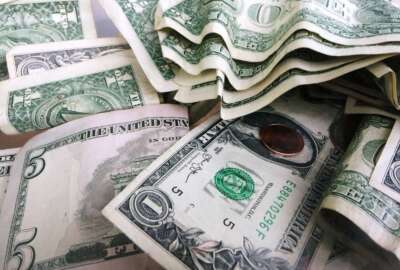
Actually, TSP investors, it’s a great time to bury your head in the sand
If you can't really change where your investments are at, don't stare at the daily fluctuations.
Editor’s note: This column has been updated. The original version transposed the numbers for the hypothetical returns on the G and C funds. That mistake has been corrected.
Don’t look at your TSP. I mean it. Don’t look.
That’s my advice. I’m following it myself, for my 401K I’ve been so carefully nurturing for umpty ump years. So should you. It’s down from its peak value a year ago. Unless you’re a great stock picking timer, there’s not much you can do except wait out this weird bear market.
I look away from car wrecks, too, being unable to unbend the metal.
Your finances could be worse. What if you’d had a position in that creepy FTX outfit? Please don’t tell me you did!
I say don’t look simply because investors are going through an anamolous time in terms of a common investing shibboleth. Many savers have traditionally balanced their investment portfolios between stocks and bonds. That’s because bonds typically do better when stocks are weak, and vice versa. But that calculus hasn’t held in the current economy.
Here’s how certified financial advisor Art Stein put it: “What’s really unusual about this year isn’t the size of the declines in the stock market. It’s the size of the declines in the bond market.” In fact, Stein said, “This could be the worst bond market returns I’ve seen in maybe the last 40 years, or maybe in the history of the United States, or going back to the 1800s. But it’s been horrible.”
You can see the horror in the Thrift Savings Plan’s bond index-based F Fund. It’s fallen 15 percent this year.
Stein said bond performance is all tied up in the gyrations of the Federal Reserve raising interest rates, which can lessen the value of existing bonds that pay out lower. Business conditions generally may also lessen the appeal of corporate bonds.
He put together numbers showing what happened to a hypothetical $100,000 in three TSP funds from January 2020 to now:
- G (short term bonds): $105,000. Not bad. Basically flat, hasn’t kept up with inflation.
- F (bond index): $91,349. Flat until starting to drift down since January of this year
- C (S&P 500 index) $128,000. It initially plummeted, then rose steadily, then ratcheted downward since January of this year.

Whatever. The main thing, as Stein put it, is there’s nowhere to hide. Hence my — our — advice to play ostrich, and don’t watch the daily gyrations of your portfolio.
For sure, the situation is scarier for retirees than for those still working. Stein put it bluntly: “If you’re working, you can afford to put your head in the sand.” That is, if you’re not making minimum required withdrawals, the losses are all paper. Better to maintain your balanced portfolio through recovery. Stein even said to resist the urge to plow everything into the G fund. It’s the only one that’s not down this year, but it you put everything there you won’t do as well when the market rebounds.
It’s always wise to keep things in perspective. Yes, the bond market is strange. But it’s not the stock market of 2008. That year, Stein noted, the C fund dropped by 55%, the S fund even more. Some of us remember Black Monday, or October 19th, 1987. The Dow Jones Industrial Average dropped 22.6%, which in those days translated to 508 points. Computer trading systems locked up worse than Ticketmaster peddling Taylor Swift tickets.
I was on vacation at the time and heard about Black Monday from a monk at a monastery in Egypt.
The ensuing decades brought a lot of wealth in the United States. The Dow, which sank to 1,739 on Black Monday, peaked at 36,799 this year.
Copyright © 2025 Federal News Network. All rights reserved. This website is not intended for users located within the European Economic Area.
Tom Temin is host of the Federal Drive and has been providing insight on federal technology and management issues for more than 30 years.
Follow @tteminWFED






